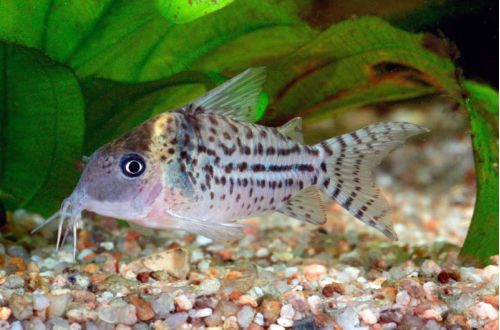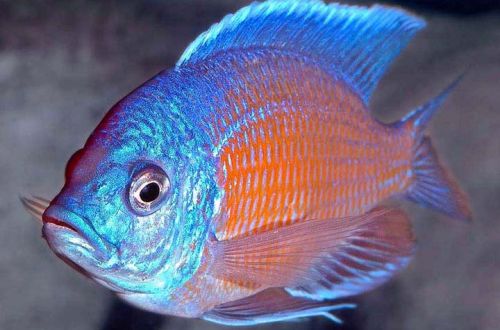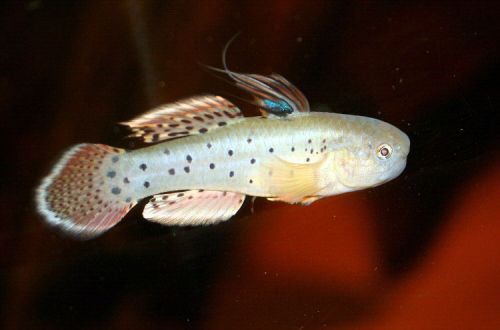
Java cockerel
Betta Picta or Javan Cockerel, scientific name Betta picta, belongs to the Osphronemidae family (Macropods or Guramieves). Despite the name and classification, this species is closer to the Gourami than to the Fighting Fish. Not recommended for beginner aquarists as it needs to maintain a certain water composition within a rather narrow optimum range.

Contents
Habitat
Comes from Southeast Asia. It is considered endemic to the island of Java, where it occurs mainly in river systems in the central and western regions. Inhabits small streams and rivers flowing down hills, prefers quiet areas near the coast, backwaters. The natural habitat is characterized by clear water, the substrate consists of a mixture of fallen leaves and rocks. Also found in artificial bodies of water such as ponds.
Brief information:
- The volume of the aquarium – from 50 liters.
- Temperature – 22-28°C
- Value pH — 5.5–7.5
- Water hardness – 1–5 dGH
- Substrate type – any
- Lighting – subdued
- Brackish water – no
- Water movement – little or no
- The size of the fish is 4–5 cm.
- Food – preferred food for labyrinth fish
- Temperament – peaceful
- Content singly or in pairs
Description
Adults reach a length of 4–5 cm. The fish has an elongated body with a large head. The anal fin extends from the middle of the body to the tail. The tail fin is rounded. The rest of the fins are short and pointed. The color is gray with a silvery or golden hue. Rows of dark interrupted stripes run along the body. The fins are reddish with blue edging. Males look brighter than females.
Food
It is recommended to use live or frozen food from brine shrimp, daphnia, bloodworms, as well as specialized commercial products for fish of the Gourami group, which are manufactured by a number of manufacturers.
Maintenance and care, arrangement of the aquarium
The optimal size of the aquarium for one or two fish starts from 50-60 liters. In the design, if possible, the environment in which the fish live in nature should be reproduced. In particular, set the lighting level to a dim level, form a row of tangled driftwood shelters, or place decorative items that can serve as a shelter. The presence of aquatic vegetation, including floating ones, is welcome. In general, Betta picta is not demanding, some breeders do not use any soil at all, and for shelters they use ordinary hollow fragments of PVC pipes or ceramic pots turned on their side.
Successful management depends on maintaining stable water conditions within acceptable temperature and hydrochemical ranges. For this purpose, mandatory aquarium maintenance procedures are carried out related to the removal of organic waste, partial replacement of water with fresh water, water treatment, etc. Installing a water purification system (filters) will reduce labor intensity and reduce the frequency of maintenance.
Behavior and Compatibility
A relatively peaceful species, although in some cases it may be intolerant of relatives. First of all, this applies to males, which, with a lack of space, will begin to perceive each other as rivals for attention to females. In small volumes, it is recommended to keep alone or in pairs (male / female). Compatible with other calm non-aggressive fish of similar size.
Breeding / breeding
Under favorable conditions, spawning is not uncommon. With the onset of the breeding season, after a short courtship, during which the fish perform a kind of embrace dance, spawning occurs. The female releases one egg at a time, the male fertilizes it and immediately takes it into his mouth. This continues until the entire masonry is in the mouth. The male carries future offspring throughout the entire incubation period (9–12 days), after which the fry that have appeared begin to swim freely. Apparently, the parents do not pose a threat to their own offspring, which cannot be said about other fish, so it is advisable to transplant the juveniles into a separate aquarium with identical water conditions.
Fish diseases
The cause of most diseases is unsuitable conditions of detention. A stable habitat will be the key to successful keeping. In the event of symptoms of the disease, first of all, the quality of the water should be checked and, if deviations are found, measures should be taken to correct the situation. If symptoms persist or even worsen, medical treatment will be required. Read more about symptoms and treatments in the Aquarium Fish Diseases section.





